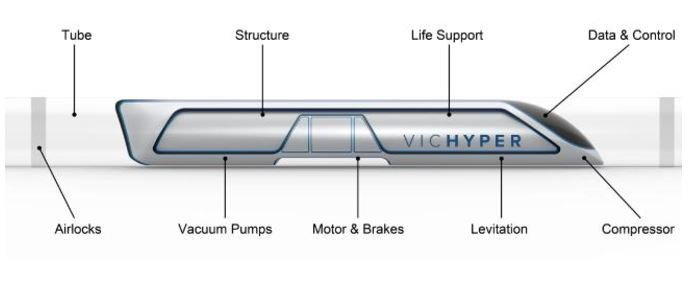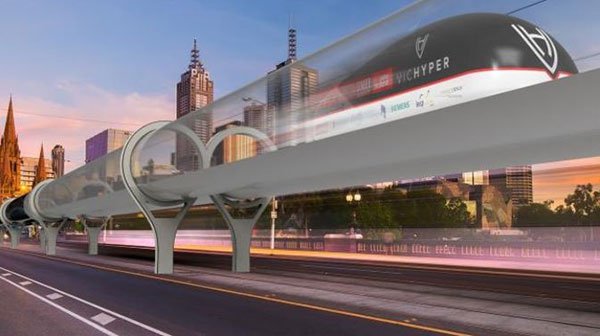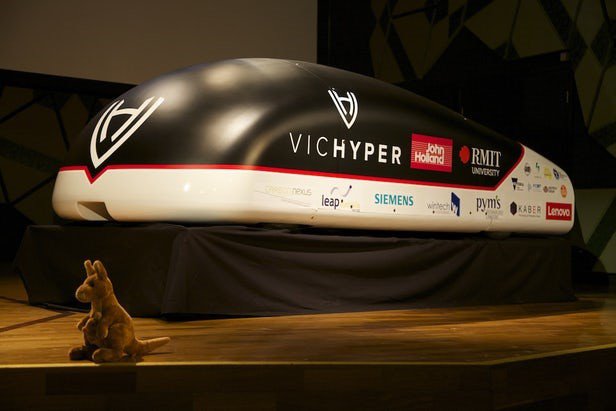Sydney to Melbourne in 53 minutes? Introducing Elon Musk’s Hyperloop
Published 22-JUN-2017 16:40 P.M.
|
4 minute read
Hey! Looks like you have stumbled on the section of our website where we have archived articles from our old business model.
In 2019 the original founding team returned to run Next Investors, we changed our business model to only write about stocks we carefully research and are invested in for the long term.
The below articles were written under our previous business model. We have kept these articles online here for your reference.
Our new mission is to build a high performing ASX micro cap investment portfolio and share our research, analysis and investment strategy with our readers.
Click Here to View Latest Articles
Imagine a radical technology that could move travellers at the speed of a jumbo jet, for the price of catching a bus.
That technology is Hyperloop.
A concept which could be revolutionary for Australia, Hyperloop would travel from Melbourne to Sydney in just 53 minutes at speeds over 1000 kmh.
What is Hyperloop?
Hyperloop is the brain child of technological visionary Elon Musk, who was too busy manufacturing luxury electric cars and sending people into outer space to flesh out the idea to its full potential.
As a result, he made Hyperloop an open-source technology, which has led to a variety of trials and tests.
Hyperloop is a mass transit system that relies on partial vacuum to move passengers and cargo near the speed of sound through a tube. The pod-like device is suspended above the tube’s surface by utilising magnetic levitation or air bearings; which is similar technology used on an air hockey table today.

In theory, Hyperloop would be resistive to any inclement weather outside and provide an energy efficient form of travel. But is it viable in Australia?

We’ve all heard or read the numerous stories about ‘very fast rail’ being just around the corner in Australia – how is Hyperloop any different?
For starters, Hyperloop is significantly faster. The most advanced ‘bullet’ trains of today can travel at speeds nearing 600kmh, significantly less than the Hyperloop’s much vaunted 1200kmh.
However, even in the unlikely event that Australia built its own fast train network it would likely import outdated models from Japan, which can ‘only’ reach speeds of around 150-200kmh. If speed isn’t enough to win you over, there’s also the cost.
Early estimates believe a Hyperloop system between Melbourne and Sydney would cost around $50 billion dollars. That sounds like a lot, but to put that into perspective – the CLARA group’s 2016 fast-rail proposal estimated its project to sit around $200 billion.
Committee for Melbourne chief Martine Letts believes Hyperloop could be utilised to produce an Australian ‘mega-region’, similar to that of north east America, which is home to roughly 25% of the United States’ population.
Seeing as the Melbourne-Sydney air space is one of the busiest in the world, the demand for a Hyperloop network is there.
“A critical component for a successful eastern seaboard region is to bridge the geographical divide via an efficient intercity link,” she said. “A rapid intercity link will support this. We have the technology to conquer the distance.”
Is Hyperloop just that – hype?
So far, it seems the idea is being taken seriously. Although Musk outsourced the development of Hyperloop, has maintained keen interest in its development.
Musk hosted the inaugural SpaceX Hyperloop Pod Competition last year.

The competition, which tasks teams of university students and engineers with designing and building a functioning Hyperloop pod, attracted over 1,200 submissions.
Of those, SpaceX selected 124 entrants to present their Hyperloop designs to a panel this January. 30 made the final round, where they had the opportunity to create a full working prototype to unleash on SpaceX’s 1.6km test track in January 2017.
One of those finalists was VicHyper, a team from RMIT University in Melbourne.
Zachary McClelland, who is the project director of VicHyper, believes a Hyperloop network servicing the Melbourne-Sydney corridor is inevitable.
“If we really wanted to do it, we could do it now, and have it built within three to five years,” he said.
He also believes the line would run above-ground through rural areas but underground in urbanised zones. Although McClelland’s projections could be overly optimistic, there’s no doubt that Hyperloop is being given serious attention.
Dubai is also working on a Hyperloop network feasibility study – with the aim of making it operational within five years.
VicHyper’s variant won the Braking Subsystem Technical Excellence Award, with the second iteration of the Hyperloop pod competition commencing in mid to late 2017. A home-grown Hyperloop system could just be what Australia needs to facilitate fast land-based travel between our two largest cities.
General Information Only
S3 Consortium Pty Ltd (S3, ‘we’, ‘us’, ‘our’) (CAR No. 433913) is a corporate authorised representative of LeMessurier Securities Pty Ltd (AFSL No. 296877). The information contained in this article is general information and is for informational purposes only. Any advice is general advice only. Any advice contained in this article does not constitute personal advice and S3 has not taken into consideration your personal objectives, financial situation or needs. Please seek your own independent professional advice before making any financial investment decision. Those persons acting upon information contained in this article do so entirely at their own risk.
Conflicts of Interest Notice
S3 and its associated entities may hold investments in companies featured in its articles, including through being paid in the securities of the companies we provide commentary on. We disclose the securities held in relation to a particular company that we provide commentary on. Refer to our Disclosure Policy for information on our self-imposed trading blackouts, hold conditions and de-risking (sell conditions) which seek to mitigate against any potential conflicts of interest.
Publication Notice and Disclaimer
The information contained in this article is current as at the publication date. At the time of publishing, the information contained in this article is based on sources which are available in the public domain that we consider to be reliable, and our own analysis of those sources. The views of the author may not reflect the views of the AFSL holder. Any decision by you to purchase securities in the companies featured in this article should be done so after you have sought your own independent professional advice regarding this information and made your own inquiries as to the validity of any information in this article.
Any forward-looking statements contained in this article are not guarantees or predictions of future performance, and involve known and unknown risks, uncertainties and other factors, many of which are beyond our control, and which may cause actual results or performance of companies featured to differ materially from those expressed in the statements contained in this article. S3 cannot and does not give any assurance that the results or performance expressed or implied by any forward-looking statements contained in this article will actually occur and readers are cautioned not to put undue reliance on forward-looking statements.
This article may include references to our past investing performance. Past performance is not a reliable indicator of our future investing performance.
